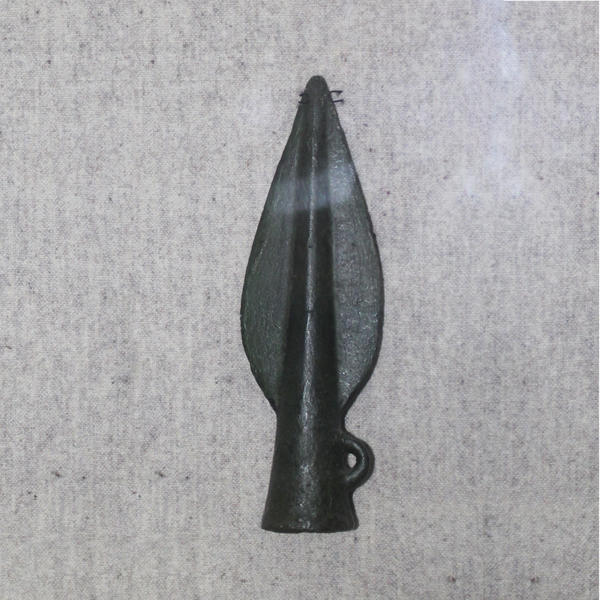The archeologists found this bronze dagger with a broad straight blade and slit handle in a burial mound near village Kvetun in Bryansk region in 1959. The archeologist and local studies expert Vasiliy Padin, the director of the local museum in the town of Trubchevsk, headed the excavations in this area. He was the one to find an ancient settlement.
Bronze dagger with slit handle
Creation period
Second half of the 2nd millennium B.C.
Dimensions
25,5x13,5x4 cm
25.5х13.5х4 cm
25.5х13.5х4 cm
Technique
Bronze, casting
Collection
Exhibition
0
Open in app#1
Bronze dagger with slit handle
#2
#5
Padin determined the time of creation of the dagger judging by its shape. It was the second half of the 2nd millennium B.C. A broad leaf-shaped blade resembled the weapons of the Srubnaya culture (Timber-grave culture) tribes living between the Rivers Volga and Dnieper. Archeologists often found ceramic jars, clay and faience pendants in their burial mounds. Sometimes the dead carried weapons on them, like those in the surroundings of Kvetun vilage. Vasiliy Padin compared this discovery with another dagger of the same period found by archeologists in the surroundings of Sosnovaya Maza village. Both blades had similar shape and were created in the same technique (bronze casting).
#6
Bronze dagger with slit handle
#7
The blade of the dagger was grinded from both sides. The stiffening rib was in the middle of the blade: it helped to keep the blade solid, to avoid bouncing and bending when striking. The weapon was decorated by an ornament of small pits. Traces of timber were found on the blade, because the dagger was kept in wooden scabbard.
Long slit holes on the handle simultaneously served decorative and practical purposes: they made the dagger lighter versus the weapon from one piece of metal, and it was easier to hold in hand. Subject to having the right skill, a warrior could capture the enemy’s weapon in such slit hole, knock it out or break it, and thus avoid the enemy’s strike.
#8
At the end of the handle, there is a figured knob, which allowed the hand not to slip-off. However, this weapon did not have a handguard separating the blade and the handle. This element appeared later, with development of different sword craft techniques.
#9
In addition to this weapon, archeologists also found a bronze spearhead in the same burial mound near village Kvetun. Vasiliy Padin identified it as also belonging to Srubnaya culture (Timber-grave culture). Just like the dagger, the spearhead had a shape of a broad acuminate leaf with the stiffening rib in the middle. It could be attached to the shaft with a nail or a pin. Fragments of the shaft to which the spear-head had been attached were found inside the collar.
The bronze spearhead
#10
State budgetary cultural institution Bryansk State Regional Ethnography Museum
read morehide
00:00
00:00
1x
Bronze dagger with slit handle
Creation period
Second half of the 2nd millennium B.C.
Dimensions
25,5x13,5x4 cm
25.5х13.5х4 cm
25.5х13.5х4 cm
Technique
Bronze, casting
Collection
Exhibition
0
Open in app
Share



